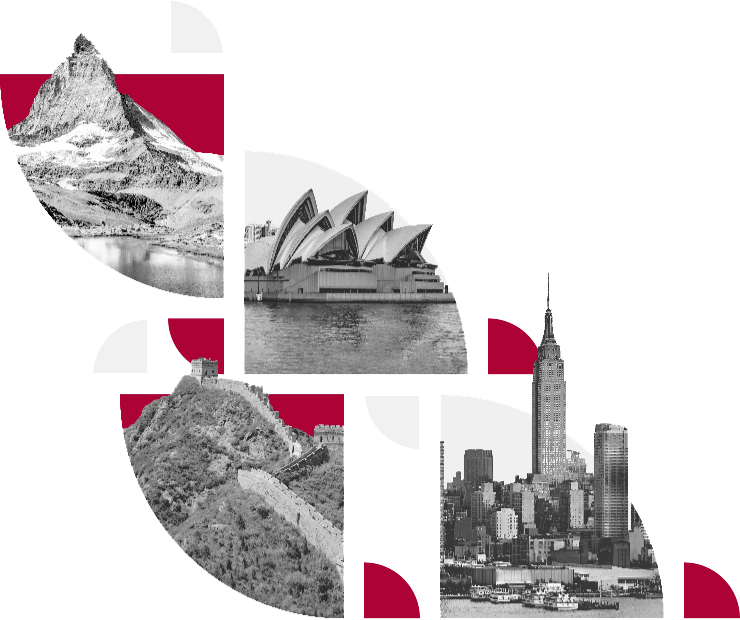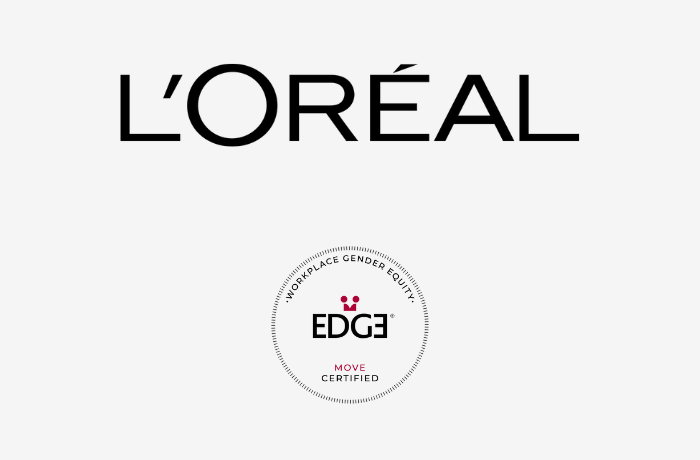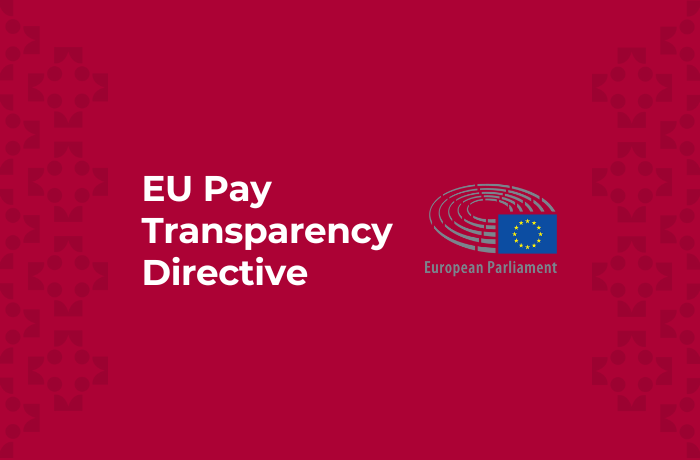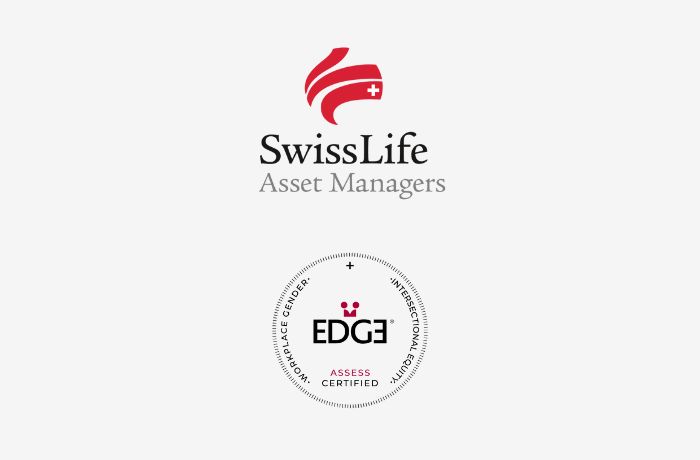Creating diverse, equitable, and inclusive workplaces is a priority for many organizations worldwide. Yet the legislative contexts governing the starting points or the limits of DE&I efforts differ from country to country.
In this overview, we present a snapshot of the DE&I legislative contexts across the 20 countries with the highest number of currently EDGE Certified organizations.
By focusing in on maternity and paternity leave allocations, pay equity legislation, and the regulation of diversity data collection, we explore the benefits EDGE Certification® can bring to employers operating in and across differing legislative contexts.
Key findings
- Among the 20 countries we analysed, nine nations (including the UK, Brazil, India, and Australia) offer maternity leave allowances longer than the 18 weeks recommended by the International Labor Organization (ILO).
- Four countries (United States, Mexico, Indonesia, and Thailand) provide allowances below the ILO’s minimum guideline of 14 weeks.
- The average paternity leave allowance across the surveyed countries is only 2.21 weeks, with most governments offering less than four weeks of paid leave for fathers.
- Spain stands out as the only country providing equal allowances for both mothers and fathers, with 16 weeks of leave paid at 100% of wages.
- Eleven of the 20 countries (including the UK, France, and Canada) have mandated gender pay gap reporting requirements for employers.
- Four surveyed countries (France, Germany, Austria, and Belgium) forbid the collection of personal data on race and ethnicity, while seven countries (including the US, UK, and Australia) allow employers to collect such data.
EquiNations
Explore DE&I regulations in 20 countries
Select a country from the dropdown menu to highlight our findings and read a summary of the standout metrics.
You can view the legend for each category by hovering or touching over a circle.

Our analysis covers the 20 countries with the highest number of current EDGE Certifications
19 DE&I indicators
Our analysis documented the following key DE&I criteria across 20 countries:
- Paid maternity leave (weeks)
- Paid paternity leave (weeks)
- Childcare costs (% of average wage couple)
- Hiring quotas for people with disabilities
- Accessibility regulations in employment
- Disability non-discrimination in employment
- Same-sex marriage legalization
- Non-binary gender identity legal recognition
- LGBTQ+ non-discrimination in employment
- Gender quotas on boards
- % of women in paid workforce
- Sexual harassment protection in employment
- Law on pay equity
- Pay gap reporting legal requirement
- Age non-discrimination in employment
- % of employment rate for 55-64 age bracket
- Race/ethnicity non-discrimination in employment
- Nationality non-discrimination in employment
- Race/ethnicity data collection allowed/prohibited
The selection of the DE&I indicators included in the present overview has been devised in parallel with the indicators measured by the EDGE Standards, focusing in on a set of legislative provisions that are paramount to achieving workplace gender and intersectional equity.
The EDGE and EDGEplus Standards holistically cover matters of balanced representation, availability of necessary policies and practices to ensure equitable career opportunities, and the perceived inclusivity of an organization’s culture in relation to gender, race/ethnicity, nationality, LGBTQ+, age, and working with a disability.
Why did we include these 20 countries?
The 20 countries included in the EquiNations legislative overview represent the countries with the highest number of currently EDGE Certified organizations:
- Australia
- Austria
- Belgium
- Brazil
- Canada
- China
- France
- Germany
- India
- Indonesia
- Italy
- Mexico
- Poland
- Romania
- Spain
- Switzerland
- Thailand
- UK
- USA
- Vietnam
The EDGE Certified organizations within these jurisdictions are already expressing a clear commitment to achieving genuine diversity, equity, and inclusion in their organizations. This is evidenced through their choice to review their own organizations’ DE&I metrics, to scrutinize their policies and practices, to investigate the perceived inclusivity of their culture, and to compare these aspects against the world’s leading DE&I standards.
The choice of the sample does not correspond to any geopolitical or economic grouping or alliance. It merely highlights the jurisdictions with the most responsive and proactive employers, who are willing to undergo the EDGE Assessment and Certification process – to commit, to make progress, and to celebrate success on their path to achieving workplace gender and intersectional equity. Given the nature of the sample selection process, the purpose of the current legislative review is not to compare certain jurisdictions with others, nor to rank vastly different and undoubtedly complex regulatory contexts. The aim of our analysis is to provide a snapshot of the available regulation within the nations represented by the highest number of EDGE Certified organizations, and to discuss the role of EDGE Certification in helping organizations within these countries align to and improve upon their different regulatory provisions.
The length of maternity leave vs. paternity leave – and the need to close the gender leave gap
Comparisons between maternity and paternity leave allocations underline the extent to why workplace gender equity matters to us all.
For the purposes of this research, we are looking at the paid maternity leave and paternity leave provisions for the 20 selected countries. The compensation for maternity and paternity leave will differ from country to country (and sometimes within countries), depending on social contributions schemes, minimum wages, and jurisdictional benefit caps.
For maternity leave, the range of pay-based allowances is, at the lowest end, 55% of the mother’s wage (and up to a limit of $650/week) in Canada and up to 100% compensation of wages in countries such as Brazil, Mexico, India, Spain, Austria, Vietnam, Indonesia, and Poland. In Australia, maternity leave is paid at the rate of the national minimum wage, regardless of the primary caregiver’s salary.
The 20 jurisdictions are categorized based on the ILO guidelines for maternity leave, which advise a minimum allowance of 14 weeks and a recommended allowance of 18 weeks. Of our sample of 20 countries:
- Four nations (United States, Mexico, Indonesia, and Thailand) offer allowances below the ILO minimum guideline of 14 weeks.
- Seven countries (Switzerland, France, Germany, Canada, Spain, Austria, and Belgium) offer between the ILO minimum guideline of 14 weeks and the proposed 18 weeks.
- Lastly, the most generous nine countries of our sample (UK, Brazil, India, Italy, Australia, Vietnam, China, Romania, and Poland) offer maternity allowances longer than 18 weeks.
The differences between maternity and paternity provisions are significant for the majority of the surveyed nations.
- While the average maternity leave allowance offered by the 20 countries is 17.61 weeks, the average paternity leave allowance is only 2.21 weeks – the majority of the surveyed countries offering less than four weeks paid leave for fathers.
In the absence of federal maternity and paternity provisions, the US is the only jurisdiction whose national legislation does not provide for paid maternity nor paternity leave. On the other hand, parental leave equality is achieved in Spain, the only country offering the same allowance for mothers and fathers (each parent receiving 16 weeks of leave, paid at 100% of their respective wages) and the only national legislation to meet the EDGE Standard on maternity and paternity allowance.
Research reveals the benefits of gender balance
The findings of our review are consistent with recent research by the World Bank Group on The Evolution of Maternity and Paternity Leave Policies over Five Decades, which looks across 190 countries. The authors (Hyland and Shen) found that while both the global averages for maternity and paternity leave have increased steadily over the last five decades, the global average for paternity allowance (20.6 days with a median of two days, in 2021) remains a small fraction of that of maternity allowance (191.5 days with a median of 98 days, in 2021). Furthermore, they argue that simply increasing maternity allocations in isolation, without aiming for a gender balance, might not always positively affect women in the workplace.
Their research shows that while the absolute number of leave days allocated to mothers is negatively associated with women’s participation in the labour market, a narrower gap between mothers’ and fathers’ leave allocations is associated with a higher labour force participation rate for women. Therefore, to encourage women’s participation in the workforce, closing the leave gap between parents is as important as ensuring that the allocated leave is sufficient and equitably renumerated.
The EDGE Standards endorse precisely such a balanced approach to parental leave, which does not evaluate maternity leave in isolation, but aims for an ambitious, yet necessary, parity between men and women. To meet the EDGE Standard for maternity and paternity leave, EDGE certifying organizations must provide a minimum of 16 weeks paid leave for both maternity and paternity leave.
All national regulations in the presently surveyed nations, other than those of Spain, fail to replicate balanced parental provisions for mothers and fathers. Thus, to ensure that historical gender roles are addressed and challenged both in the workplace and as part of family structures, the robustness of the EDGE Certification’s assessment and guided action plan for progress, are especially beneficial to employers operating in contexts where regulations fail to ensure an equitable distribution of childcare responsibilities between parents.
Effective management of pay equity
Every nation surveyed by our DE&I legislative review has included equal pay for equivalent work, and equal pay on the basis of gender, as part of their national legislation – either as part of their constitution or as part of the national labour code.
The legal recognition of pay equity between men and women as an indispensable pillar of a just society is an important foundation for constructing and maintaining fair workplaces.
- 11 of the top 20 EDGE certifying nations (UK, Switzerland, France, Germany, Canada, Italy, Spain, Australia, Austria, Belgium, and Brazil) have mandated gender pay gap reporting requirements for employers.
- In Poland, similar reporting requirements are partially in place, for the banking sector exclusively.
The legislators in more than half the sample of nations included in our research have acknowledged that while the recognition in law of the right to fair and equal pay is absolutely necessary, it might be insufficient in isolation, to address historical pay imbalances, to understand their root causes, and to work towards eradicating them. These countries have chosen to take a proactive approach, by mandating organizations with the responsibility to record and analyse the factors contributing to unfair remuneration in their workplaces.
How EDGE Certification helps
Third-party certification can benefit employers wishing to proactively manage pay equity in their organizations, both in jurisdictions legislating pay gap reporting and in contexts where such compliance is not required by law. In the absence of national guidelines, the robustness of the EDGE Certification system guides employers regarding the best practices in pay gap analysis and aids them in creating ambitious action plans that foster accountability and drive progress.
Furthermore, in jurisdictions already mandating pay gap reporting, EDGE Certification can be a helpful tool to ensure that employers comply with their national requirements, while ensuring that pay gap reporting goes beyond a mere compliance exercise. This is achieved through placing it within a holistic framework of measuring workplace gender and intersectional equity, both quantitively and qualitatively, and setting clear and tailored goals for advancement.
Reporting the results of a statistical analysis of the risk of unexplained gender pay gaps in certifying organizations is recommended by the EDGE Standards for companies certifying at the EDGE Assess and EDGE Move levels. For organizations aiming to comply exhaustively with the EDGE Standards, and thus to become EDGE Lead certified, running and reporting the results of a regression analysis is compulsory.
DE&I monitoring and workplace race/ethnicity data
The collection of personal data relating to one’s race or ethnicity can be a sensitive matter, which is why regulators must engage with this topic with the utmost care and provide clear guidance, to ensure that personal data remains anonymous and is processed securely.
- Due to this data’s sensitive nature, and due to historical rights infringements and discrimination enabled by the categorization of citizens based on their racial and/or ethnic identity, four out of our 20-country sample (France, Germany, Austria, and Belgium) forbid the collection of personal data on race and ethnicity.
- Conversely, the legislation of seven out of 20 surveyed nations (United States, United Kingdom, Brazil, Canada, Mexico, Australia, and China) allows employers to collect data pertaining to employees’ race/ethnicity.
In the United States specifically, employers with more than 100 employees are mandated to report their workforce demographics to the Equal Employment Opportunity Commission. Similarly, in the United Kingdom, while not mandatory, the Race Disparity Unit provides clear guidance and recommends the use of a harmonized standard to any employer wishing to analyse the racial/ethnic distribution of their workforce for DE&I monitoring generally or for analysing potential ethnicity pay gaps in their organization.
In other national contexts (such as Switzerland, India, Italy, Spain, Thailand, Romania, and Poland), the collection of workforce statistics pertaining to race/ethnicity is not explicitly forbidden by the law, although the lack of specialized legislation for data collection for DE&I monitoring purposes places employers in a regulatory grey area, deeming the practice difficult, unfeasible, and underperformed.
How data collection enables progress
Lack of coherent data collection, analysis, and reporting standards pertaining to race/ethnicity makes international comparison difficult and staggers DE&I progress. The EDGE Certification system, through the EDGEplus add-on, enables employers to engage in race/ethnicity data collection that is grounded in the principles of self-identification, voluntary participation, confidentiality and informed consent. It also ensures the availability of intersectional identities for self-selection by data subjects, as per the best practices and recommendations by anti-racism NGOs.
Where legislation allows, the EDGEplus certification enables organizations to analyse the intersection of gender and race/ethnicity within their workplaces, and contributes to the consolidation of a DE&I practice that is endorsed by 80% of anti-racism NGOs and is indispensable for the identification, measurement, and correction of race/ethnicity-based inequities in the workplace. Furthermore, the collection of workplace data pertaining to the intersectional identities of employees enables organizations to recognize and celebrate the unique and heterogenous make-up of their workforce, and allows them to implement policies and practices that are tailored on the needs, preferences, and cultures of their workforce to create truly inclusive working environments.
Aligning with global standards: the power of EDGE Certification
Legislative landscapes inevitably differ, and organizations aiming to foster an inclusive environment need to consider the specific standards and practices within each region. Nevertheless, the EDGE Standards can support companies in their efforts towards diversity, equity, and inclusion (DE&I) – and do so across varying jurisdictions with significant cultural, legal and societal differences.
The EDGE Standards, consisting of EDGE (gender-binary) and EDGEplus (gender and intersectionality), offer a holistic framework against which organizations can measure where they stand in terms of gender and intersectional equity.
The EDGE Standards are built on four key pillars:
- Representation
- Pay equity
- Effectiveness of policies and practices to ensure equitable career flows
- Inclusiveness of the culture
Through third-party certification against the EDGE Standards, an organization can achieve EDGE Certification at one of three levels – EDGE Assess, EDGE Move and EDGE Lead – or advance through them. In doing so, EDGE Certification helps organizations to accelerate their DE&I progresses and build internal and external credibility, no matter where they are on their DE&I journey.
EDGE Empower®️ is a comprehensive, software-based DE&I solution that guides organizations through their DE&I journey and supports them in becoming eligible for EDGE Certification at the EDGE Assess, EDGE Move, or EDGE Lead, with or without EDGEplus.
Note on current data
The data presented in this review is updated as of May 2023.
Upcoming regulatory changes:
- The European Parliament has recently adopted the pay transparency directive. EU companies will be required to share information about how much they pay women and men for work of equal value and take action if their gender pay gap exceeds 5%. Following the entry into force of the EU directive and its implementation into national legislation, the pay gap reporting legal requirement indicator will be adjusted in our review for the European Union member states included.
Adjustments after publication date:
- In Australia, parental leave provisions have increased to 20 weeks for children born or adopted after 1 July 2023.
- In July 2023, Brazil introduced new legislation targeting the gender pay gap. Subsequently, in November 2023, the Ministry of Labor issued Federal Decree No. 11,795/2023, covering technical and practical aspects not addressed in the Gender Pay Parity Law. This includes guidelines for the Salary Transparency and Remuneration Criteria Report, which private legal entities in Brazil with 100 or more employees must release bi-annually (in March and September). The decree also outlines the necessary components of the Action Plan for Mitigating Wage Inequality to address identified pay discrimination on the basis of gender, race, ethnicity, nationality, or age.
This analysis is based on research undertaken by EDGE Certified Foundation in May 2023.
Are you aware of further regulatory changes or wish to issue a correction? Please email us at info@edge-cert.org.



